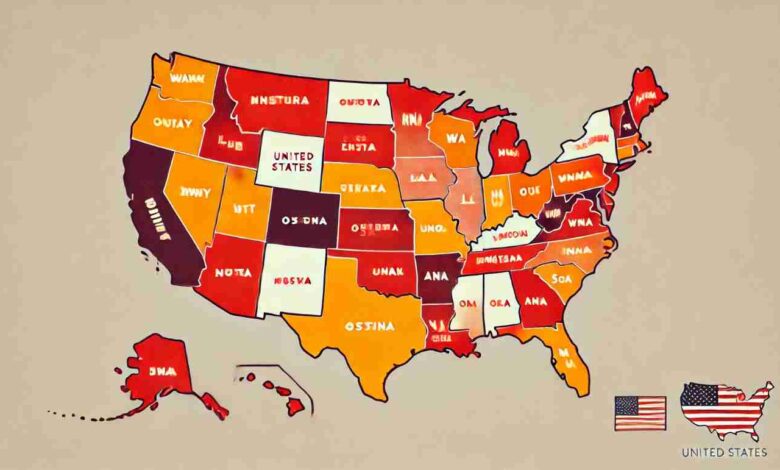The Future of Stop and Identify States

The concept of ‘Stop and Identify States’ laws has been a topic of lawful conversation or social discussion in the United States. These laws permit law enforcement to approach individuals and demand identification under certain conditions, usually upon a reasonable suspicion of committing an offense. While there are currently 24 states with such laws on the books, their fate is inextricably linked to evolving legal interpretations and public opinion as well as societal demands. Let’s explore where this legislation is heading and what it could mean for both law enforcement and the public.
What Are Stop and Identify States?
Before talking about future laws, it’s important to understand where these laws come from. In states that have “Stop and Identify” laws, police officers can ask a person to give their name, address, and explain why they are at a certain place. If someone refuses to share this information, they might be arrested or fined.
These laws started after the 2004 Supreme Court decision in the case of Hiibel v. Sixth Judicial District Court of Nevada. The court ruled that it wasn’t against the Fourth Amendment of the U.S. Constitution for officers to ask for basic identifying information during a stop, as long as this request was just one part of the officer’s reason for suspicion. However, how these laws are understood and used is different in each state, which makes it a legally confusing topic for federal courts.
Current State of Stop and Identify Laws
As of today, states like Utah, Nevada, and Indiana have robust “Stop and Identify” statutes in place, where refusal to provide identification can lead to arrest. In other states, such as Wisconsin and North Carolina, there is no formal requirement for citizens to provide identification unless they are driving a vehicle.
The Legal Challenges
Ongoing legal challenges will shape the future of ‘Stop and Identify’ laws. The main issue is finding a balance between personal freedoms and public safety. Groups like the American Civil Liberties Union (ACLU) have long fought against racial profiling and unnecessary searches under these laws. Critics argue that ‘Stop and Identify’ laws, similar to old vagrancy laws criticized in the Papachristou case, break the Fourth Amendment of the U.S. Constitution. They see these laws as an unreasonable form of search and seizure, whether they are misused in each case or not.
Emerging technologies like police body cameras and AI that help in policing are likely to influence future legal views. These technologies could make law enforcement more transparent and accountable during stops, possibly reducing misuse of ‘Stop and Identify’ statutes.
This could lead to greater public trust in the system, reduce skepticism about certain organized actions, or reveal issues that prompt future legal changes.
Public Perception and Social Justice
Public opinion is important for the future of stop and identify laws. Movements like Black Lives Matter have increased attention on how police officers work, leading to demands for more responsible enforcement, especially in communities that often face unfair treatment. There are calls for changes to make sure these laws do not unfairly target minorities.
Although it’s unlikely that states without these laws, like California and New York, will adopt them due to resistance to change, they may continue or even become stricter in places like Florida and Texas, where there’s strong support for law enforcement.
The Impact of Technology on Stop and Identify Laws
The biggest impact on the future of stop-on-demand laws is definitely technology. Recently, law enforcement agencies have been creating new ways to identify people without needing to interact with them directly. They use facial recognition software, license plate readers, and more drones in the sky. This might lead to a rethink of stop and identify laws.
However, using this technology has its own challenges. Many cities in the U.S. have banned or limited government use of facial recognition because privacy advocates believe it threatens civil liberties. As these tools become more common, police may not need to ask for your identity as often. But this could also raise privacy issues and might result in new laws.
Predictions for the Future
Stop and identify laws will probably remain a continuing source of controversy moving forward. Possibilities for how laws may develop include:
Tougher Laws in Some Places: Some areas might keep or increase their stop and ask for ID laws. They believe these laws help prevent crime and keep people safe, especially where crime is high.
Changes in Some States: In places like California and New York, where people really care about individual freedoms, there might be efforts to limit or clarify these laws.
A Common Rule for Everyone: There might be discussions about having one rule for the whole country to manage how these laws are used, although some think these decisions should stay with each state.
Changes with New Technology: As police start using more technology, they might not need to stop people as much. But, this brings up new worries about privacy and what’s right or wrong.
The Bottom Line
The future of stop and identify laws will likely find a balance between keeping people safe and respecting individual freedoms. These laws, and whether they should grow or change, are big questions as we face issues like privacy, police reform, and the rise of new technologies. Lawmakers need to craft laws that protect both public safety and civil rights amid these advancements.
Stop and identify laws will continue to be a hot topic for discussion. How these laws evolve will depend on the direction of broader social and political trends, ongoing legal challenges, and shifts in public opinion.




